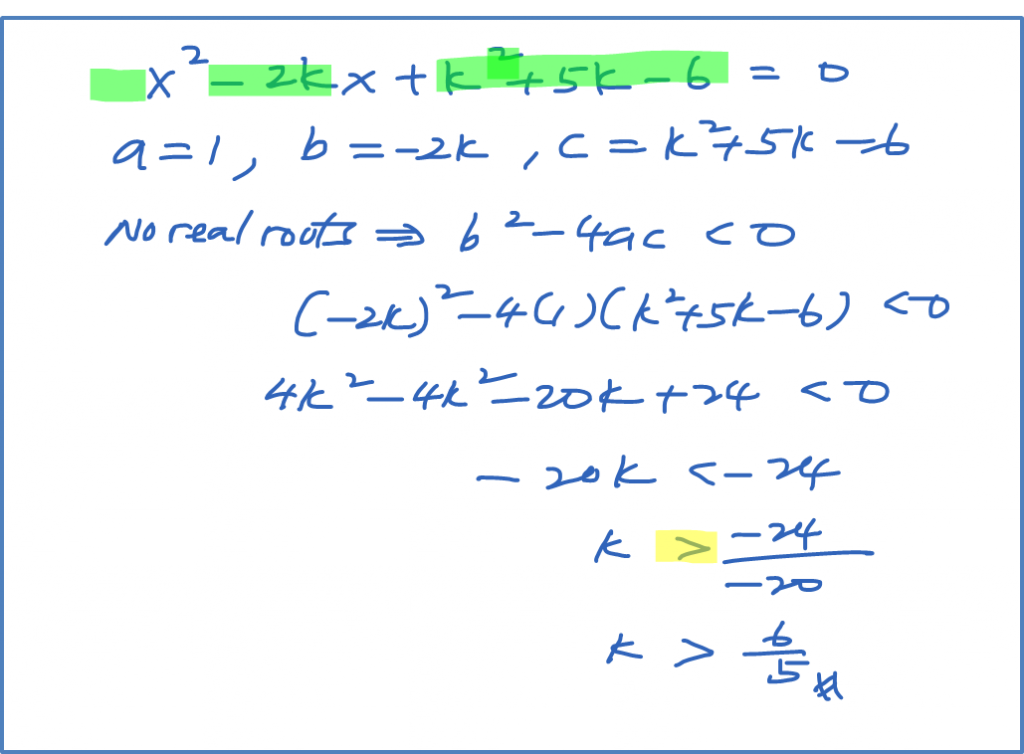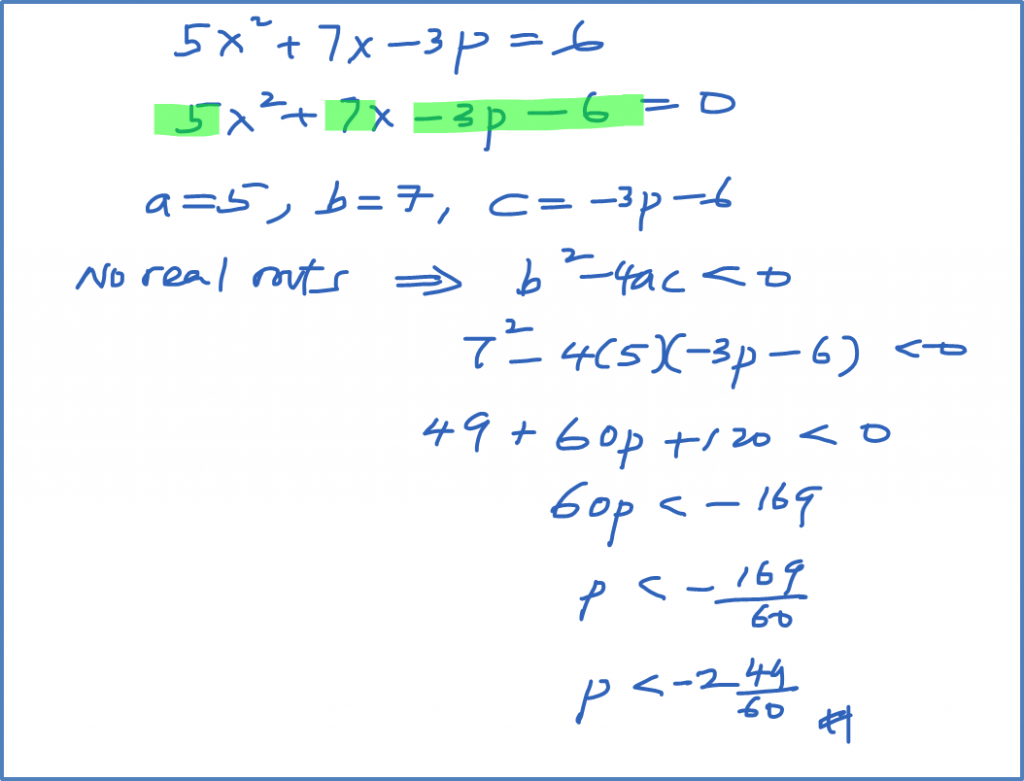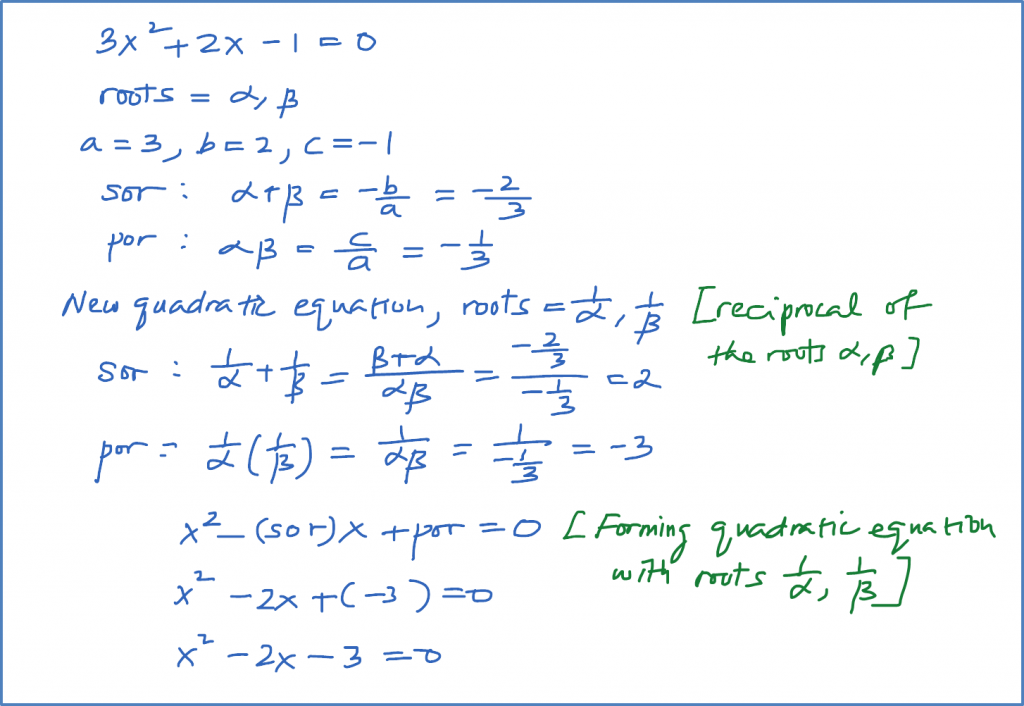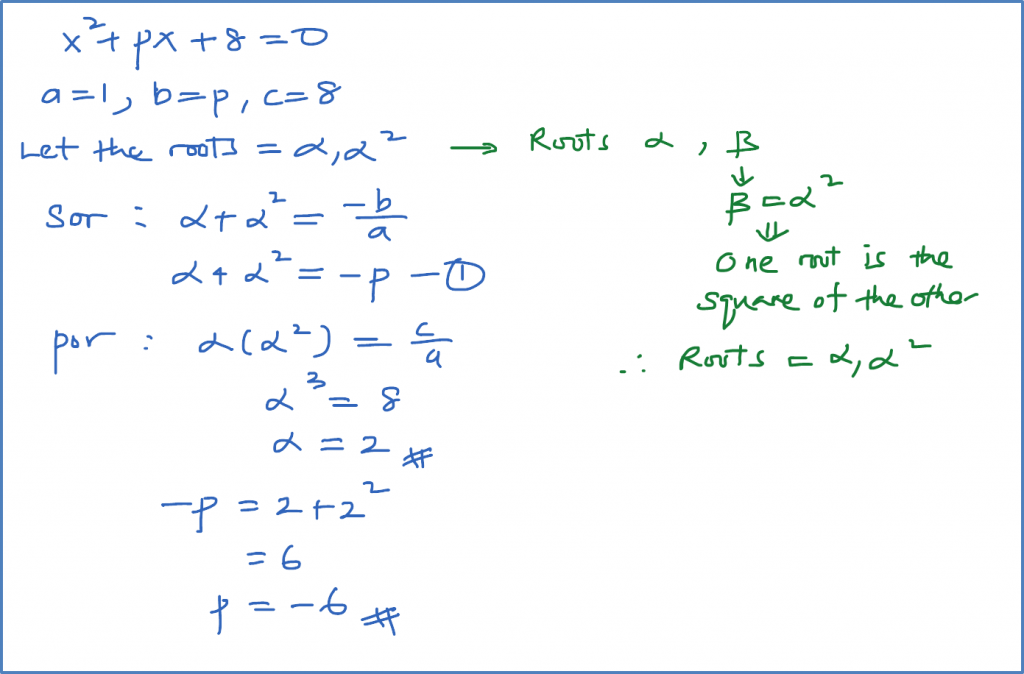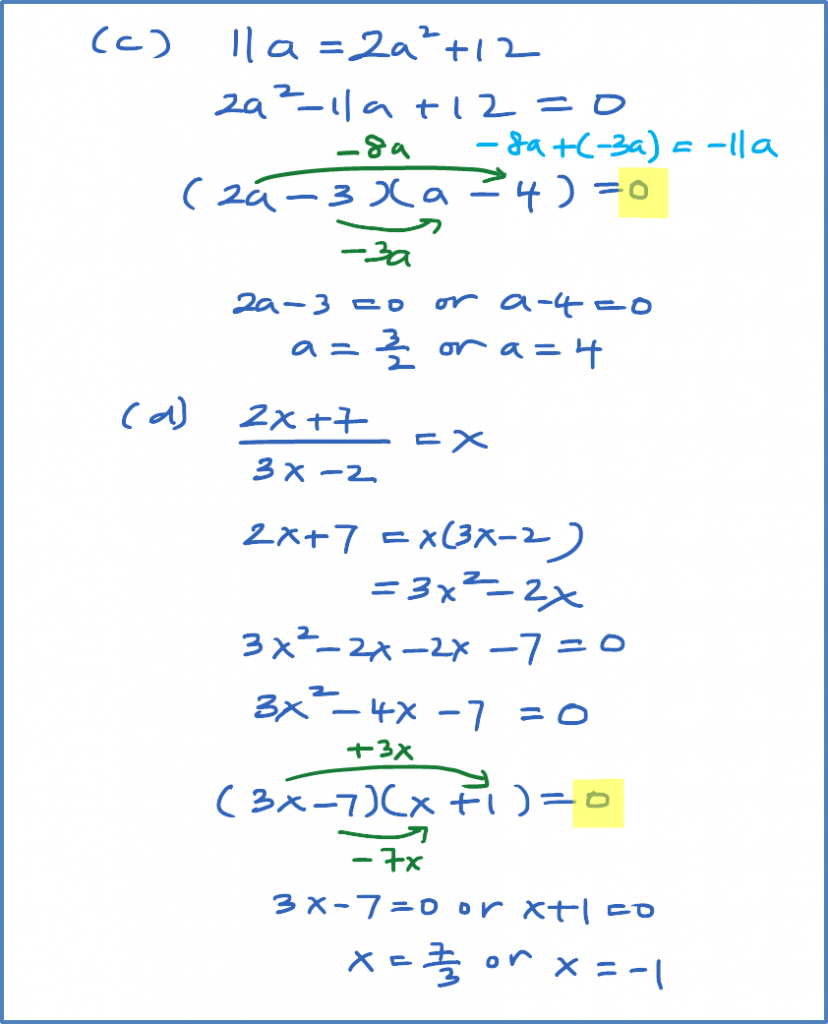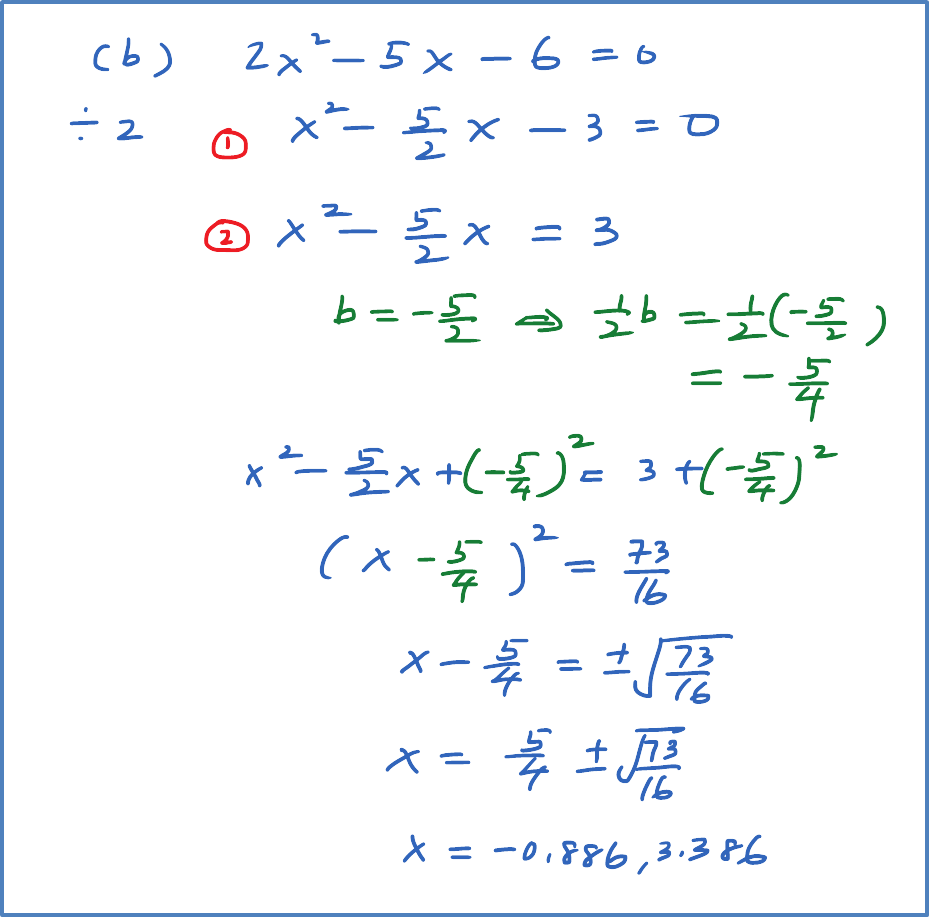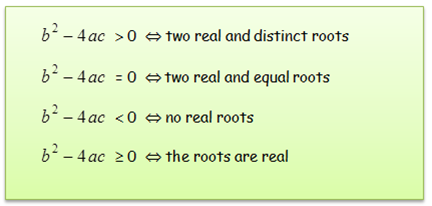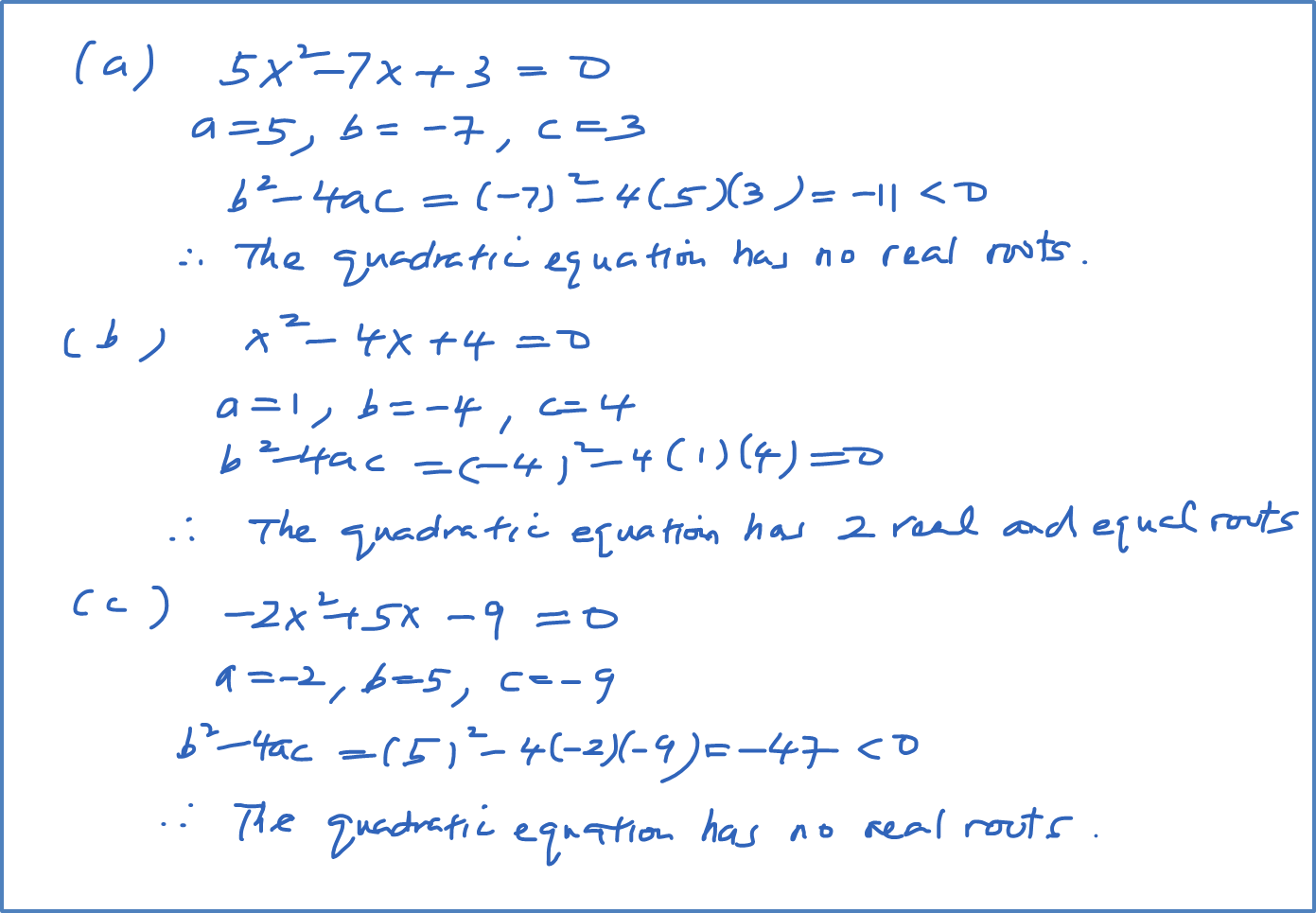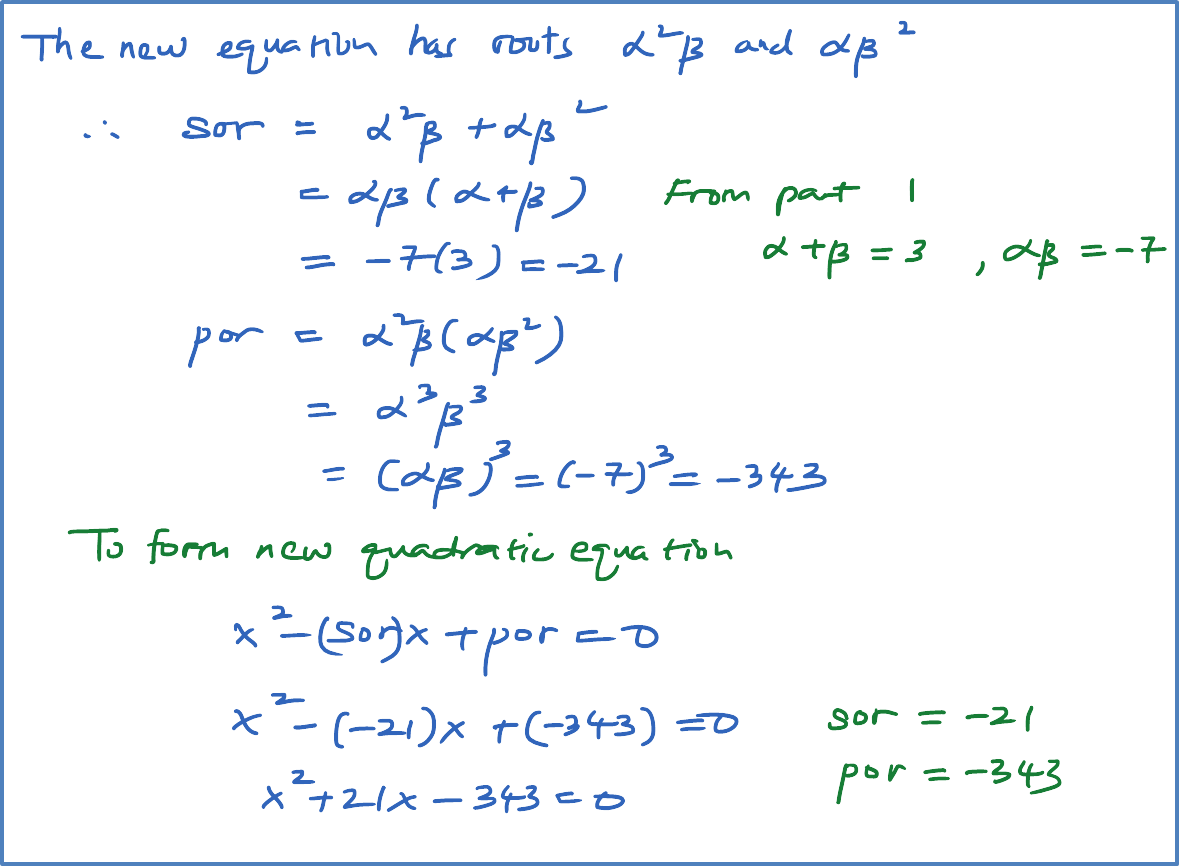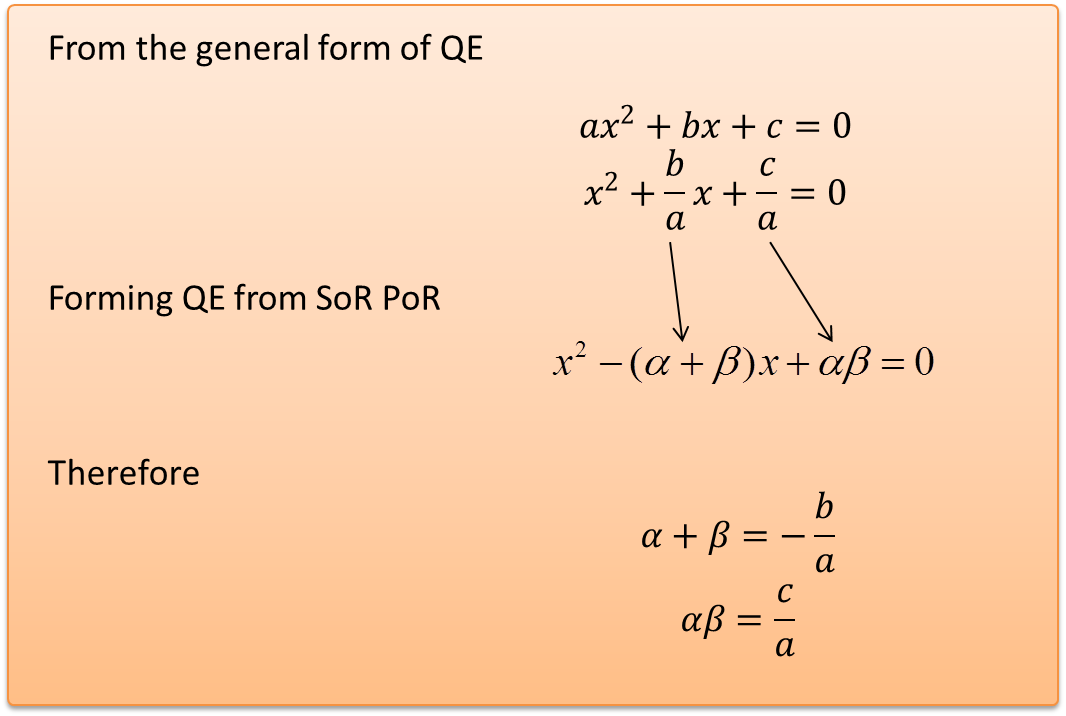Roots of Quadratic Equations
Roots of a quadratic equation are the values of variables/unknowns that satisfy the equation.Example:
Determine whether 1, 2, and 3 are the roots of the quadratic equation x2−5x+6=0 .
Answer:
When x = 1,
x2−5x+6=0(1)2−5(1)+6=02=0
x = 1 does not satisfy the equation
When x = 2,
x2−5x+6=0(2)2−5(2)+6=00=0
x = 2 satisfies the equation.
When x = 3
x2−5x+6=0(3)2−5(3)+6=00=0
x = 3 satisfies the equation.
Conclusion:
- 2 and 3 satisfy the equation x2−5x+6=0 , hence there are the roots of the equation.
- 1 does not satisfy the equation x2−5x+6=0 , hence it is NOT the root of the equation.

